2002 Ester Schwimmer, 5 months, and a young black bear,
(probably in the first season it was on its own) who kidnaps her, then,
pursued, drops her, fatally injured in the head and neck, from its mouth,
and is later shot by police, without trial or any legal formalities. When
Ester's mother had seen the bear approaching the porch of the vacation bungalow
where the family, from Brooklyn, was staying, she took her 4- and 2-year-olds
inside, foolishly leaving the infant. When she returned outside, the bear
had fled with Ester in its mouth.
2002:: 115 of the 147 aboard
an overloaded Russian military helicopter, coming from Mosdok,
Ingushetia, overloaded with soldiers and some relatives (all 5 crew members
survive),
Which, with the engine on fire, apparently shot down by a Strela shoulder-fired
missile of Chechen patriots, makes an emergency landing just before 17:00
in a minefield protecting the the Russian base at Khankala, Chechnya. Detonating
mines engulf the helicopter in flames, others kill some of the survivors
who manage to get out. Among the dead are several officers' wives and the
child of a nurse. The Mi-26 is the heaviest and most powerful transport
helicopter in the world, designed to carry 82 persons.
2001
Samir Abu Zeid, Palestinian activist, his daughter Inez, 7, and son Suleiman,
5, when their their home in the town of Rafah, Gaza Strip, is hit,
during an exchange of fire, by an Israeli rocket (according to the Palestinians)
or a Palestinian mortar shell falling short of its target (according to
the first Israeli version) or a bomb which Samir was preparing in his yard
(the final Israeli version, the most likely one). This brings the al-Aqsa
intifada body count to 575 Palestinians and 152 Israelis.
2001
Muhammad Arrar, 13, Palestinian shot in the chest by Israeli soldiers
patrolling the Israel-Egypt border in the southern Gaza Strip, who were
firing back at Palestinian militants throwing grenades and fired rifles
at them.
2001 Moeen Abu Lawi, 38, Palestinian, shot
in the neck by Israeli soldiers enforcing the blockade of Nablus, West Bank,
from where Lawi was returning after having sneaked in to buy books for his
shop in a neighboring community.
1991 Gavin Cato, 7, Black,
and Yankel Rosenbaum, 29, Jewish. Rioting erupts in the Brooklyn
NY neighborhood of Crown Heights after Gavin Cato is struck and killed by
the car driven by Yosef Lifsh, a Jew from the ultra-Orthodox Lubavitch community.
Three hours later, a gang of Blacks fatally stabs Rosenbaum, a rabinnical
student born in Australia. The violence rages over the next two days —
including 188 injured and angry crowds breaking windows, shouting “Heil
Hitler!” and burning the Israeli flag. A grand jury would decline to
charge Lifsh, who would move to Israel. Lemrick Nelson Jr., 16, Black, would
be charged with killing Rosenbaum but acquitted in state court. In federal
court, he would be convicted of violating Rosenbaum's civil rights and,
on 31 March 1998, be sentenced to the maximum, 19.5 years in prison, along
with Charles Price, another Black, who was videotaped provoking the rioters.
But, on 07 January 2002, the 2nd US Circuit Court of Appeals would overturn
their convictions, saying that the trial judge's efforts to secure an ethnically
balanced jury were unconstitutional and the defendants actually wound up
with a juror who had shown bias during jury selection; and order a new trial
before a properly chosen jury. This third trial would take place in May
2003.
1980: 301 persons in plane crash of Saudi
Arabian Lockheed Tristar, on landing at Riyadh
1978:: 422
moviegoers, in an arson fire at a cinema in Iran
1977
Julius (Groucho) Marx, 86, comedian (Marx Brothers)
1958 The Packard car. ^top^
The production of the elegant Packard
line ends, soon after Packard’s acquisition of Studebaker. Studebaker-Packard
attributes the decision to lagging luxury car sales. Many wondered
why Packard, with its reputation for high-quality cars and knowledgeable
management, would buy the debt-ridden Studebaker Company. Studebaker's
management, not Packard's, took over after the merger. |
1957 David Bomberg, British painter born on 05 December
1890. — MORE
ON BOMBERG AT ART “4” AUGUST
— LINKS
—// From the booklet Russian Ballet: Image 3
— Image 6
— Image 2
— Image 4
— Image 1
— Image 5
1955 Some 200 by floods in the US Northeast.
1942: 3600 Allied Dieppe raiders and some
Germans. ^top^
During World War II, General John H.
Roberts leads an Allied force of some 7000 men carry out a large daytime
raid against German positions at the French seaport of Dieppe. Aided
by tanks and aircraft, the commando force — made up of approximately
5000 Canadians, 2000 British soldiers, and a handful of American and
Free French troops — gain a foothold on the beach in the face
of a furious German defense. During nine hours of fighting, the Allies
fail to destroy most of their targets, and lose 3600 men, 106 aircraft,
a destroyer, thirty-three landing craft, and thirty tanks. The Dieppe
raid would provide information valuable for planning the successful
Allied landings in Northern Africa, Sicily, and Normandy. |
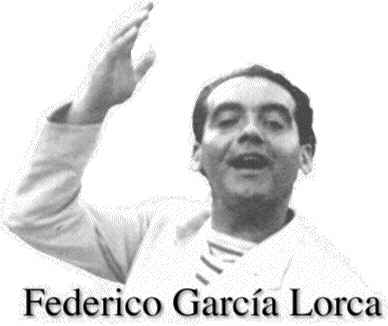 1936
Federico García Lorca, 38, Spanish poet and dramatist, summarily
executed. ^top^ 1936
Federico García Lorca, 38, Spanish poet and dramatist, summarily
executed. ^top^
He is shot without trial, in the night
of 19~20 August, shortly after the outbreak of the Spanish Civil War,
by Franco's troops after being forced to dig his own grave, in the
city where he had grown up, Granada, to which he had fled from Madrid
is July. [The Falange has no need of poets?]
Born
on 05 June 1898, García Lorca was noted for his poems of death
and for his trilogy of folk dramas Bodas de Sangre (1933),
Yerma (1934), and La Casa de Bernarda Alba ( June
1936).
His father made him study
law, but Frederico abandoned it to study music, for which he was quite
gifted, literature, and painting. In 1918 he published a prose book
about a trip in Castile: Impresiones
y Paisajes. As a student at the University of Madrid, he
became known as a poet who said that verse is made to be recited,
not laid dead in a book. García Lorca became friends with such
contemporaries as painter Salvador Dali, filmmaker Luis Buñuel,
and poet Rafael Alberti, and met older ones, such as poet Juan Ramón
Jiménez.
Eventually García
Lorca did publish Libro de Poemas (1921), Primera Canciones (1936),
Canciones (1927). His first play, El
Maleficio de la Mariposa, closed after one night in 1920.
He wrote Poema
del Cante Jondo in 1922, Romancero
Gitano in 1927.
García
Lorca had his first success in the theater in 1927 in Barcelona with
the poetic and romantic drama Mariana
Pineda, with scenery by Salvador Dali. The first public exhibition
of García Lorca's drawings was held in 1927 in Barcelona.
In 1929-1930 García Lorca made
a trip to Cuba and to the US and wrote Poeta
en Nueva York.
Then he
wrote the poems of Diván
del Tamarit, the retabillos (puppet plays) Los
Títeres de Cachiporra
and Retabillo de Don Cristóbal.
The
inspiration for Bodas
de Sangre came from a news item: a bride had fled on her
wedding day with her secret lover, and groom and lover killed each
other. Lorca makes pawns of fate out of the characters, trapped in
a conflict between passion and civilization's code. Yerma,
is about a childless woman who kills her sterile husband. La
Casa de Bernarda Alba, almost entirely in prose, is about
four hateful and lustful sisters who emprison their mother in a house
of mourning.
GARCIA LORCA ONLINE: Obras
Completas — |
Los caballos negros son.
Las herraduras son negras.
Sobre las capas relucen
manchas de tinta y de cera.
Tienen, por eso no lloran,
de plomo las calaveras.
Con el alma de charol
vienen por la carretera.
[from Romance de la Guardia Civil: they are riding toward
a gypsy village.] |
A las cinco de la tarde.
Eran las cinco en punto de la tarde.
Un niño trajo la blanca sábana
a las cinco de la tarde.
Una espuerta de cal ya prevenida
a las cinco de la tarde.
Lo demás era muerte y sólo muerte
a las cinco de la tarde.
[from Lamento por Ignacio Sánchez Mejía, a
bullfighter friend who died in 1934 from a goring} |
1929 Sergei P. Diaghilev, 57, Russia, Russian ballet impresario
and director, died. He founded his Ballets Russes and produced such masterpieces
as Stravinsky's Rite of Spring and Firebird.
1918 Roger Joseph Jourdain, French artist born on 11 December 1845.
1905 William Adolphe Bouguereau, French painter born on
30 November 1825. — MORE
ON BOUGUEREAU AT ART “4” AUGUST
— LINKS
— Self Portrait
— The
Broken Pitcher — Love's
Resistance — Dance
— Fraternal
Love — Mother
—
Nymphs — Birth
of Venus — Rest
— Seated
Nude — Standing
Angel — Bathers
— Bohémienne
— Destitute
Family (Charity) — Nymphs
and Satyr — The
Education of Bacchus — Admiration
1895 John Wesley Hardin, one of the bloodiest killers of
the Old West, is murdered in a saloon in El Paso, Texas, by off-duty policeman
John Selman, who was under threat by Hardin for having arrested his girl
friend. An El Paso jury would acquit Selman of the murder.
1862 Settlers, killed by Dakotas bypassing
Fort Ridgely ^top^
On the third day of the Dakota (Sioux)
uprising in Minnesota, warriors debate whether they should attack
a garrison inside of Fort Ridgely. Concluding that the fort was too
strong, the Dakota moved on to the settlement of New Ulm, killing
settlers along the way. The uprising began when the Dakota bands were
pushed to the limit during a summer in which their crops were destroyed
by insects and many families faced starvation. Attempts to get local
merchants to extend them credit failed, and promised provisions from
the Federal government were not forthcoming. This came after years
of white settlement had whittled the Dakota territory down to a few
small, temporary reservations.
The uprising exploded on 17 August when some young Dakota men killed
members of a nearby white family. Knowing that the tribe would be
blamed for the atrocity, the Dakota, led by Taoyateduta (also known
as Little Crow), began attacking local farms and killing settlers.
A force of 46 soldiers was dispatched to head off the Dakota, but
they were ambushed along the way, and more than half were killed.
The Dakota next headed to the fort, where they found less than 50
soldiers and nearly 200 frightened settlers taking refuge in a cluster
of buildings, as the fort had no stockade. On the morning of 19 August
the warriors conferred in full view of the garrison and refugees.
After deciding that the fort was too strong, the warriors attacked
the nearby German community of New Ulm, killing 17 townspeople. The
uprising would last for two more months before Union troops subdued
the rebellion. More than 500 whites were killed and 2'000 Indians
captured. On 26 December 1862, 38 Dakota warriors were hanged for
their participation in the uprising. |
1822 Jean-Baptiste
Delambre, French astronomer born on 19 September 1749. He produced
tables of the location of planets and their satellites. He also worked in
the Bureau des Longitudes. A large lunar crater is named after him.
1782 Francesco de Mura, Italian painter born on 21 April
1696: — MORE
ON MURA AT ART “4” AUGUST — LINKS
— Ecce
Homo — Self
Portrait — The
Madonna and Child with the Infant St. John
1692 Five
Salem "witches," hanged in Salem, Massachusetts after
being convicted of the crime of witchcraft. Fourteen more people are executed
that year and 150 others are imprisoned.
1665 Pierre Antoine
Lemoyne, French artist born in 1605.
1662 Blaise
Pascal, 39, French mathematician, writer, religious
philosopher, and physicist. ^top^
The son of a judge in the French tax
court, the teenage Pascal invented a calculating device to help his
father's tax computations. The counting device relied on a series
of wheels divided into 10 parts each, representing the integers 0-9.
The wheels, which were connected by gears and turned by a stylus,
kept track of sums as numbers were added and subtracted.
PASCAL ONLINE: |
| Correspondance
diverse
La
Machine arithmétique
La
Machine d'Arithmétique
La
Machine d'Arithmétique
Le
"Mémorial"
Petits
écrits philosophiques et religieux |
Les
Provinciales ou Les lettres écrites par Louis de Montalte à un Provincial
de ses Amis et aux RR. PP. Jésuites sur le Sujet de la Morale, et
de la Politique de ces Pères
Pensées
Pensées
(éd. 1671)
Pensées
de M. Pascal sur la Religion et sur quelques autres Sujets, qui
ont esté trouvées après sa Mort parmy ses Papiers |
1657 Frans Snyders, Flemish painter born on 11 November
1579. — MORE
ON SNYDERS AT ART “4” AUGUST
—
LINKS — The
Monkey and the Gander [also two humans, a dead deer, most of a dead
boar, dead birds, a boiled lobster, fruit] — Still
Life with Cats and Monkeys — Market
Scene on a Quay — A
Cook and Food — The
Fruit Basket — Fish
Shop — Fruit
and Vegetable Stall _ detail
— Still-life
with a Basket of Fruit — Still-life
— Vegetable
Still-Life — Wild
Boar Hunt — Still
Life with a Swan — Flowers,
Fruits and Vegetables. — The
Monkey and the Gander
1646 Francesco Furini,
Florentine painter born in 1604. — MORE
ON FURINI AT ART “4” AUGUST
— LINKS
— St
John the Evangelist — Lot
and his Daughters — Judith
and Holofernes
1493 Frederick III Innsbruck
Austria, German Emperor (1440-1493)
0440 Saint Sixtus III
Pope
-14 -BC- Octavian [Augustus], 48, Roman general
|
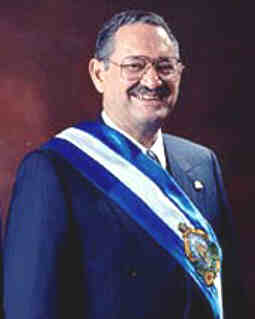 Deaths
which occurred on an 19 August:
Deaths
which occurred on an 19 August: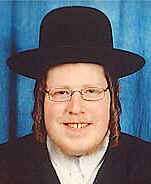
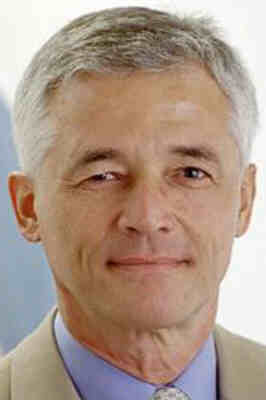
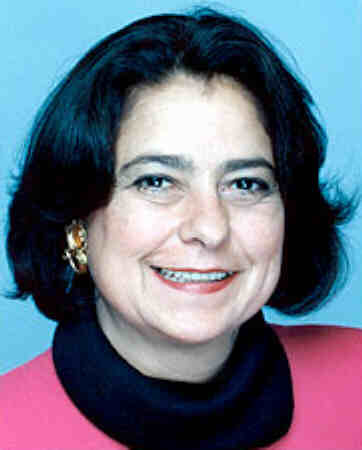 2003
The following 16 UN staff members:
2003
The following 16 UN staff members: 
 1936
Federico García Lorca, 38, Spanish poet and dramatist, summarily
executed.
1936
Federico García Lorca, 38, Spanish poet and dramatist, summarily
executed.